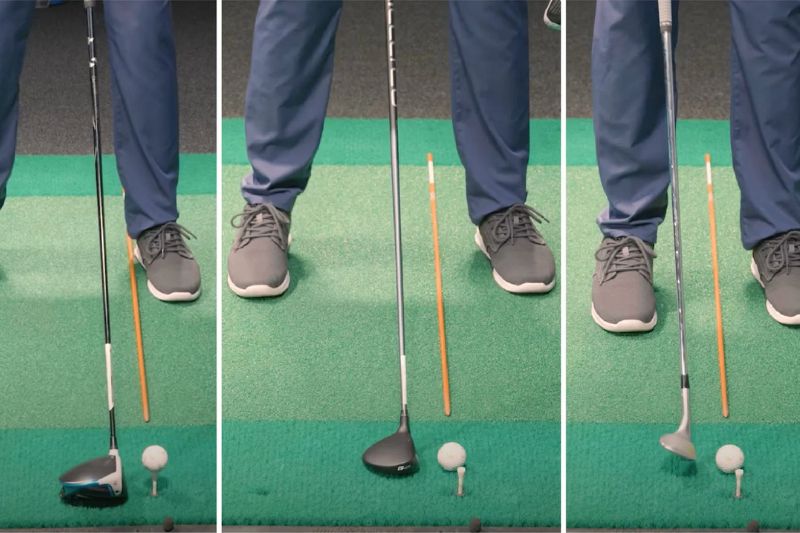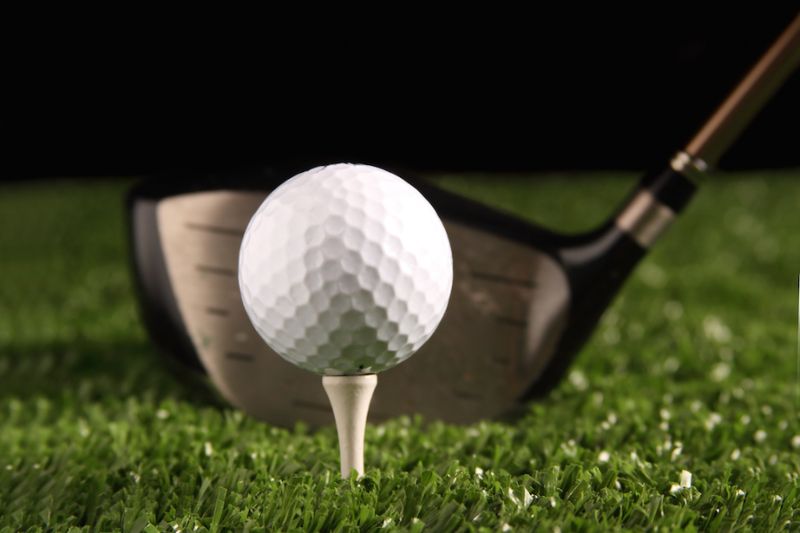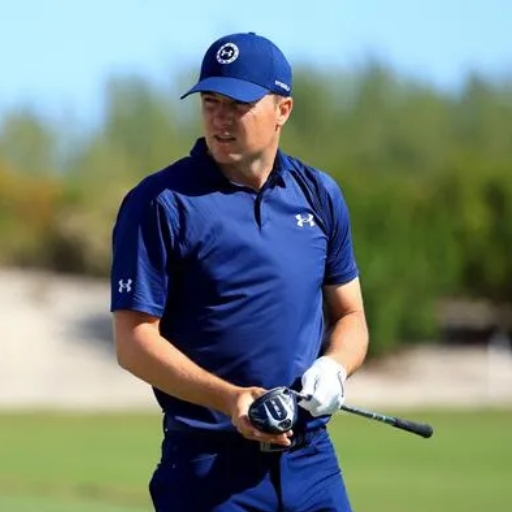In golf, the ability to hit the ball low can be a game-changer. Whether you’re dealing with strong winds, low-hanging branches, or simply want to execute a controlled shot, knowing how to keep the ball low can help you navigate challenging conditions. In this comprehensive guide, we’ll cover everything you need to know about hitting the ball low, including the technical aspects, equipment considerations, and practical tips. Let’s dive in!
How to Hit the Ball Low in Golf

Hitting the ball low, also known as hitting a “stinger” or “punch shot,” requires a combination of technique and finesse. This section will cover the fundamental principles and provide a step-by-step guide on how to execute this shot.
Understanding the Low Shot
Before we get into the specifics, it’s important to understand what makes a low shot different from a standard shot. A low shot travels on a lower trajectory, which helps it cut through the wind and avoid obstacles. This is achieved by making adjustments to your stance, swing, and equipment.
Setting Up for a Low Shot
To hit the ball low, your setup is crucial. Start by positioning the ball slightly back in your stance, closer to your right foot (for right-handed golfers). This helps you strike the ball with a descending blow, which naturally keeps the ball lower.
Adjusting Your Stance and Posture
Your stance should be slightly narrower than usual, with a more centered balance. Bend your knees a bit more and lean slightly forward. This posture helps you stay stable and control the clubface angle through impact.
Ball Position and Clubface Angle
As mentioned, positioning the ball back in your stance is key. Additionally, ensure your clubface is slightly closed at address. This setup helps create a lower launch angle and reduces the amount of backspin, allowing the ball to stay lower.
Swing Mechanics
The swing for a low shot is more abbreviated than a full swing. Focus on a shorter backswing and a controlled follow-through. Think of it as a “punch” rather than a full swing. This approach helps you maintain control and prevents the ball from ballooning.
Controlling the Clubhead Speed
For a successful low shot, control your clubhead speed. A slower, more deliberate swing helps maintain a lower trajectory and prevents the ball from climbing too high. The key is smooth and controlled acceleration through impact.
Follow Through
The follow-through for a low shot is typically lower and more abbreviated. Focus on keeping your hands low and the clubhead under control. This finishing position helps ensure a lower ball flight.
When to Use a Low Shot

Knowing when to hit the ball low is just as important as knowing how to do it. This section will cover different scenarios where a low shot can be beneficial.
Windy Conditions
Windy conditions are one of the most common reasons to hit the ball low. A low trajectory helps reduce the wind’s impact on the ball, making it easier to control your distance and direction.
Obstacles and Hazards
When faced with low-hanging branches or other obstacles, a low shot can help you navigate safely. By keeping the ball low, you can avoid getting caught in trouble and keep your round on track.
Controlled Distance
A low shot is also useful when you want to control your distance, especially on shorter shots or when approaching the green. The lower trajectory helps the ball roll out more, providing better distance control.
Troubleshooting Hooks and Slices
Hitting a low shot can also be a useful technique for managing hooks and slices. By reducing the height and spin, you can minimize the effects of these common miss-hits and keep the ball in play.
Club Selection for Low Shots

Choosing the right club is crucial when attempting a low shot. This section will explore the best clubs for hitting the ball low and how to select them.
Long Irons and Hybrids
Long irons and hybrids are often the go-to clubs for low shots. Their lower lofts naturally produce a lower ball flight, making them ideal for this type of shot.
Fairway Woods
Fairway woods can also be effective for low shots, especially off the tee or from the fairway. Their design and loft make it easier to keep the ball down while still achieving good distance.
Wedges for Punch Shots
While wedges are typically used for high, soft shots, they can also be used for low punch shots. By positioning the ball back in your stance and abbreviating your swing, you can keep the ball low and control your distance.
Driver Adjustments
While not commonly used for low shots, adjusting your driver’s loft and setup can help you hit a low stinger off the tee. Lowering the loft and teeing the ball lower can produce a penetrating ball flight.
Practice Drills for Hitting Low Shots

Practice is essential for mastering the low shot. Here are some drills to help you refine your technique and gain confidence.
Punch Shot Drill
Practice hitting punch shots with various clubs to get a feel for the mechanics. Focus on a shorter backswing, controlled follow-through, and maintaining a low finish.
Low Ball Flight Drill
Set up targets at different distances and practice hitting low shots to them. This drill helps you control your trajectory and distance, essential for mastering the low shot.
Wind Simulation Drill
Practice hitting low shots in windy conditions or simulate wind by using a fan or other device. This practice helps you get comfortable with the challenges of playing in the wind.
Common Mistakes When Hitting Low Shots
Hitting low shots can be tricky, and there are common mistakes to watch out for. This section will cover some of the most frequent errors and how to avoid them.
Standing Too Upright
One common mistake is standing too upright, which can lead to hitting the ball too high. Remember to bend your knees and maintain a forward-leaning posture.
Over-accelerating
Over-accelerating through impact can cause the ball to climb higher than intended. Focus on a controlled swing and smooth acceleration.
Improper Ball Position
Placing the ball too far forward in your stance can lead to a higher ball flight. Keep the ball back in your stance to ensure a lower trajectory.
Mental Approach to Hitting Low Shots
The mental aspect of golf is crucial, especially when attempting challenging shots like the low shot. Let’s explore some mental strategies to help you execute this shot successfully.
Visualizing the Shot
Visualization is a powerful tool in golf. Before hitting a low shot, visualize the ball’s trajectory and landing spot. This mental imagery can help you stay focused and committed to the shot.
Staying Calm Under Pressure
Low shots often require precise execution, especially in challenging conditions. Stay calm and focused, and trust your abilities. Deep breathing and positive self-talk can help manage stress.
Accepting the Outcome
Not every shot will go as planned, and that’s okay. Accept the outcome, learn from the experience, and move on to the next shot with a positive mindset.
Physical Conditioning for Low Shots
Physical conditioning can play a significant role in your ability to hit low shots effectively. Let’s explore some exercises and stretches that can help improve your flexibility, strength, and balance.
Core Strengthening
A strong core is essential for maintaining control and balance during your swing. Incorporate exercises like planks, Russian twists, and leg raises into your fitness routine.
Flexibility Training
Flexibility is crucial for a smooth and unrestricted swing. Stretching exercises for your hamstrings, hip flexors, and lower back can improve your range of motion and prevent injuries.
Balance Drills
Balance drills, such as standing on one leg or using a balance board, can help you maintain stability and control during your swing. These exercises are particularly useful for hitting low shots.
The Role of Weather Conditions
Weather conditions can significantly impact your ability to hit low shots. This section will cover how to adjust your approach based on different weather conditions.
Windy Conditions
In windy conditions, a low shot can help you control the ball’s trajectory and minimize the wind’s effect. Focus on maintaining a smooth, controlled swing to keep the ball down.
Rainy Conditions
Rain can make the course slippery and challenging to navigate. Focus on maintaining a steady stance and controlled swing to prevent slipping and keep the ball low.
Cold Conditions
Cold weather can affect your flexibility and swing speed. Warm up thoroughly before playing, and consider using a lower lofted club to achieve a lower trajectory.
Equipment Considerations for Low Shots
Your equipment can play a crucial role in your ability to hit low shots effectively. This section will explore some equipment considerations and adjustments.
Adjusting Loft
Adjusting the loft on your driver and fairway woods can help you hit the ball lower. Lowering the loft can produce a more penetrating ball flight, ideal for low shots.
Choosing the Right Ball
The type of golf ball you use can also impact your ability to hit low shots. Balls with a lower compression and firmer cover can help produce a lower trajectory.
Club Customization
Customizing your clubs, such as adjusting the shaft length and weight, can also help you achieve a lower ball flight. Consult with a professional club fitter for personalized recommendations.
FAQs
1. How do I hit a low shot with a driver?
To hit a low shot with a driver, tee the ball lower, position it slightly back in your stance, and make a controlled, smooth swing. Focus on keeping your hands low and finishing with a shorter follow-through.
2. Can I hit a low shot with a wedge?
Yes, you can hit a low shot with a wedge by positioning the ball back in your stance and making a shorter, controlled swing. This technique is useful for punch shots or when navigating obstacles.
3. How can I practice hitting low shots?
Practice hitting low shots by setting up targets at different distances and focusing on keeping the ball flight low. Use drills like the punch shot drill and practice in windy conditions to improve your skills.
4. What are the benefits of hitting a low shot in golf?
Hitting a low shot can help you navigate windy conditions, avoid obstacles, control your distance, and manage hooks and slices. It can also be a useful tool for managing difficult lies and tight fairways.
5. Is hitting the ball low more difficult than hitting it high?
Hitting the ball low can be more challenging for some golfers, as it requires precise technique and control. However, with practice and the right adjustments, hitting low shots can become a valuable skill in your golf game.

I am the owner of Ricks Golf Shop, a popular destination for golf enthusiasts. My passion for golf began in my teenage years and has only grown over the years. With over 10 years of experience in the golf industry, I offer expert advice and quality products. With a friendly demeanor and extensive knowledge, I ensure every customer leaves happy.
